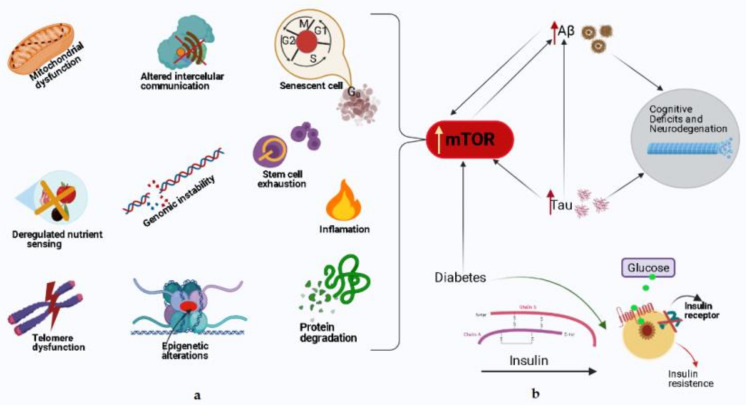Figure 2.
Schematic representation of mTOR hyperactivity in cognitive aging and AD. (a) Left—The implications of mTOR in main processes of aging. These features of aging, to different degrees, lead to an increased risk for AD, as well as cognitive decline during normal aging. Rapamycin and other pharmacological approaches that decrease mTOR activity may be valuable for delaying AD progression. (b) Right—The interrelation between neuropathological hallmarks of AD and mTOR. Hyperactive mTOR increases the production of Aβ and tau; and many factors including diabetes may influence the crosstalk of these proteins, and the aberrant cycle it creates contributes to the pathogenesis of AD.

